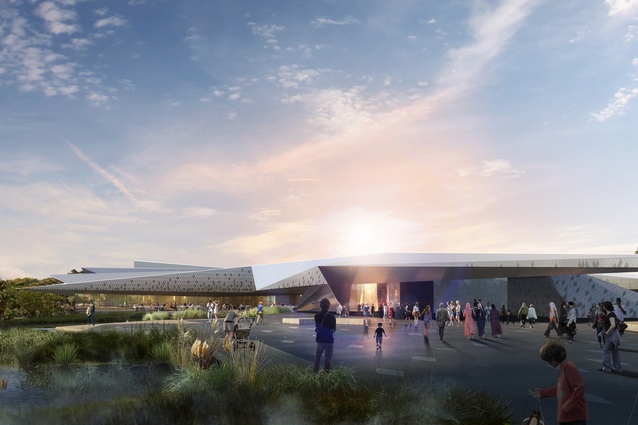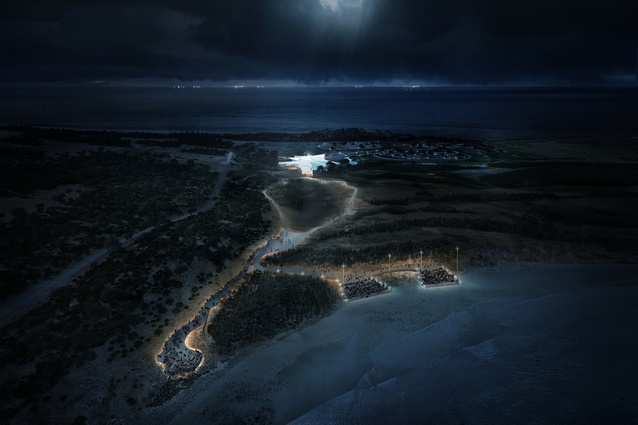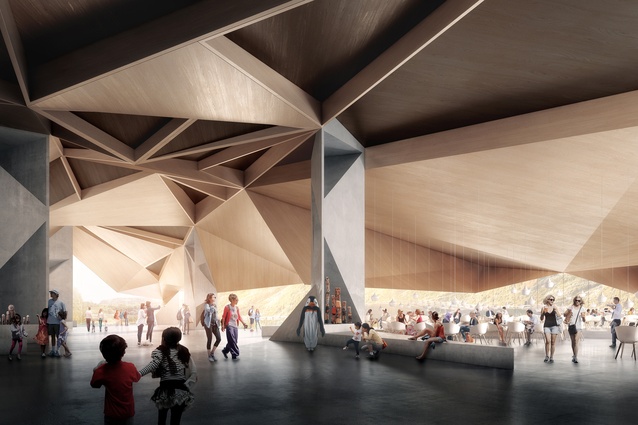The Penguin Parade on Victoria’s Philip Island is the state’s most visited tourism destination. Each evening, just before sunset, roughly 3,800 people gather to see the Philip Island penguins come ashore in their daily commute.
But it’s not just tourism that the Penguin Parade must facilitate. Its reputation as a sight-seeing destination is always in delicate tension with its function as a conservational habitat.
When architecture firm Terroir was appointed principal architect for the new Penguin Parade visitor centre, they were posed with the challenge of maintaining this delicate balance between the site’s two functions.
An additional challenge was posed by the site’s diversified geography; the Penguin Parade visitor centre sits at the nexus of three distinct landscape types: dunes, headland, and wetland.
Terroir’s resulting, $58.2-million design is an acutely angular structure that is both functional and striking, and which responds to its landscape both formally and experientially. According to Terroir, the Penguin Parade visitor centre links the various landscape components “like a brooch that gathers these together and responds to each in specific ways”.


“The power of the three landscapes is acknowledged in the homogenous zinc cladding to the building that increases its abstraction while providing a constant against which the three landscapes are registered.”
The building’s envelope is designed to be robust; a design goal that is mirrored in the interior material palette. As with the façade, the ceiling’s mismatched triangular forms are composed of exposed timber and plywood panels. The self-finishing materials feature “integrated colour and texture” for a sharp, sprawling ceiling that reflects its natural context.
Of course, as Victoria’s most visited tourist destination, the interior space also needed to accommodate large crowds. To address this, Terroir designed the ground level around “a major circulation path for large crowds and which forms a spine”. Off this spine are arranged multi-purpose spaces for ticketing, education, retail and restaurants – all the pre-requisites for a space with a dual tourism and conservation function.
“Between the central spine and discrete functional spaces is a layered edge condition of unprogrammed and indeterminate ‘third spaces’ which enable individual experience and interpretation,” says Terroir. “[These spaces respond] to these three landscapes and the penguin experience.”

The star-shaped visitor centre is the centrepiece of Terroir’s design, but it is not the most significant to the feathered local population. As part of the project – to which the Victorian government allocated $48.2 million – Terroir will contribute to the restoration of 6.7 hectares of habitat, and 1.5 hectares of new wetland habitat. This is enough to accommodate approximately 1,446 breeding penguins.
Terroir’s Penguin Parade design is slated for completion in 2019. The visitor centre forms part of the Summerland Peninsula masterplan, which has already seen the completion of an underground penguin viewing facility – called Penguin Plus – by Wood Marsh Architecture and Tract Consultants.

